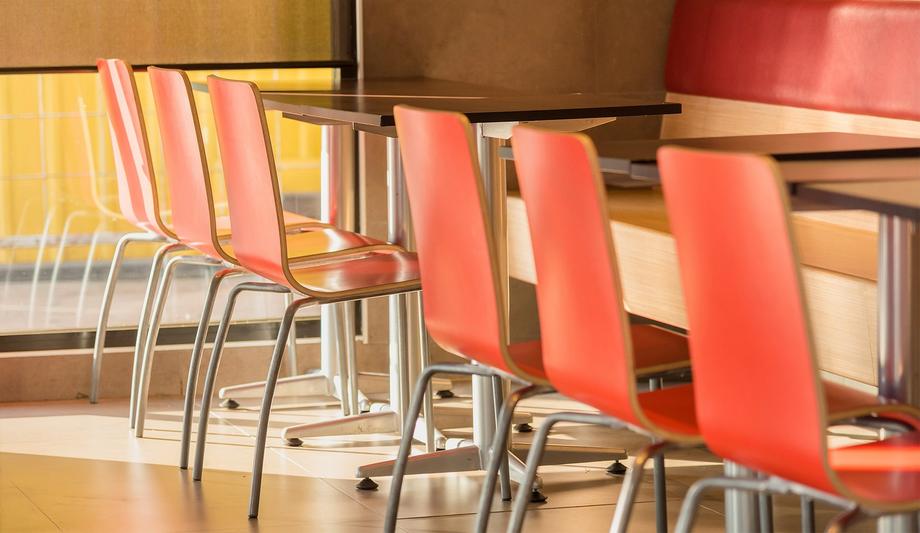Since the early 1920s, when the transition to fast food consumption began with the grand opening of White Castle in Wichita, Kansas, fast-casual dining has appealed to a fast-paced way of life – offering convenience and affordability. Today, fast-casual restaurants are as popular as ever, continuing to challenge restaurants to offer a consistent brand experience. This requires security and safety operations to be conducted at a volume and pace too rapid for humans to consistently monitor and execute productively.
24/7 safety and security
Many major fast-food chains, such as McDonald’s, Burger King, KFC, Chick-fil-A, etc., operate sophisticated systems to ensure safety and security in restaurants 24/7. This sets a standard for security hardware and equipment in all locations. These include video surveillance systems, alarm systems, time-delay safes, fortified drive-thru windows, and robbery prevention training for the entire staff.
Smart security cameras help operators automate the monitoring and analysing of visitor and employee behaviour
The monitoring of video surveillance systems offers the highest level of return amongst these technologies when fast-casual chains are looking for simplified automation and optimisation of operations.
Smart security cameras that combine the Internet of Things (IoT) and security cameras with Artificial Intelligence-enabled video analytics, help operators automate the monitoring and analysing of visitor and employee behaviour. By gaining valuable insights from video data, restaurant operations can be optimised, and customer experience will be enhanced.
Maintaining consistency
Optimised execution and consistent quality are barriers faced by many fast-casual food chains, and when coupled with rising labor costs, low training, and high employee turnover, are making the case for technology solutions designed to help with consistent execution. However, very few are taking advantage of digitised, or automated, opportunities.
According to the Zenput, 2020 Restaurant Ops Report, 27 percent of operators say their company is embracing technology to automate various aspects of their organisation “to a great extent.” However, 83 percent of operators who have embraced automation, report their experience has been positive.
Positive customer experience
Smart cameras equipped with AI-video analytics are also helping food retailers to ensure consistency
Because uniformity of the customer experience is an important aspect of fast-casual spaces, each location must streamline the entire process, from customer line entry to order, production, and delivery and exit. Smart cameras equipped with AI-video analytics are also helping food retailers to ensure consistency across locations and processes in a variety of innovative ways.
One restaurant that was able to increase sales based on business intelligence gathered from smart cameras was Happy Donazz & Co, a German baked goods chain specialising in American-style donuts. With 15 franchise outlets occupying a mix of locations, including in shopping centres and some inside major food retailers, the German chain needed a consistent way to analyse the performance of individual outlets.
This information would be used to create internal benchmarks for corporate and franchisee use as well as to provide individual franchise owners intelligence to make improvements and boost individual store sales.
Enhanced restaurant layout
Happy Donazz deployed a footfall application in its stores to monitor visitor traffic and customer flow. By gathering visual analysis over time, Happy Donazz was able to detect and respond to customer flow patterns.
Through the use of heat mapping applications, a geographical representation of the data can be gained from camera systems, enabling operators like Happy Donazz to easily identify critical areas and take appropriate action to optimise the layout. For example, if a restaurant offers a self-checkout or online order pick-up station, smart cameras can help decision-makers in designing the best possible routes through a restaurant for customers.
Over time, analysis can also help identify weaknesses in restaurant layout and improve overall customer experience. By offering real-time insights, cameras can also help to spot loitering in the restroom or identify suspicious behaviour in corners or hallways that are difficult to monitor. The cameras can also monitor the self-checkout or online order pick-up areas for suspicious behaviour and possible thefts.
Video analytics for streamlined staffing and operations
Smart security cameras analyse restaurant occupancy to plan to staff based on actual demand, rather than just feeling
Proper staffing for busy times can be difficult for many fast-casual restaurants. Smart cameras can help fine-tune and optimise personnel planning by analysing restaurant occupancy continuously. This ensures managers can keep enough staff on hand at all times, creating superior customer experiences.
Smart security cameras detect visitors entering and leaving a restaurant, using people counting applications, and analyse restaurant occupancy over time enabling managers to plan to staff based on actual demand, rather than just gut feeling.
The future of AI video analytics in fast-casual restaurants
Today’s technology has evolved from “digital” to “smart,” leveraging AI to gain better insights into business operations and understand customer behaviour. While fast-casual restaurants have been required to adapt to modern technologies faster than other restaurants due to the speed and accuracy requirements of production, this offers them the unique opportunity to be some of the first to leverage video analytic technology.
With this in mind, fast-food/fast-casual restaurants can ensure each store is running as optimally as possible, offering consistent experience and ensuring quality standards are being met – ushering in the dining experience of the future.








